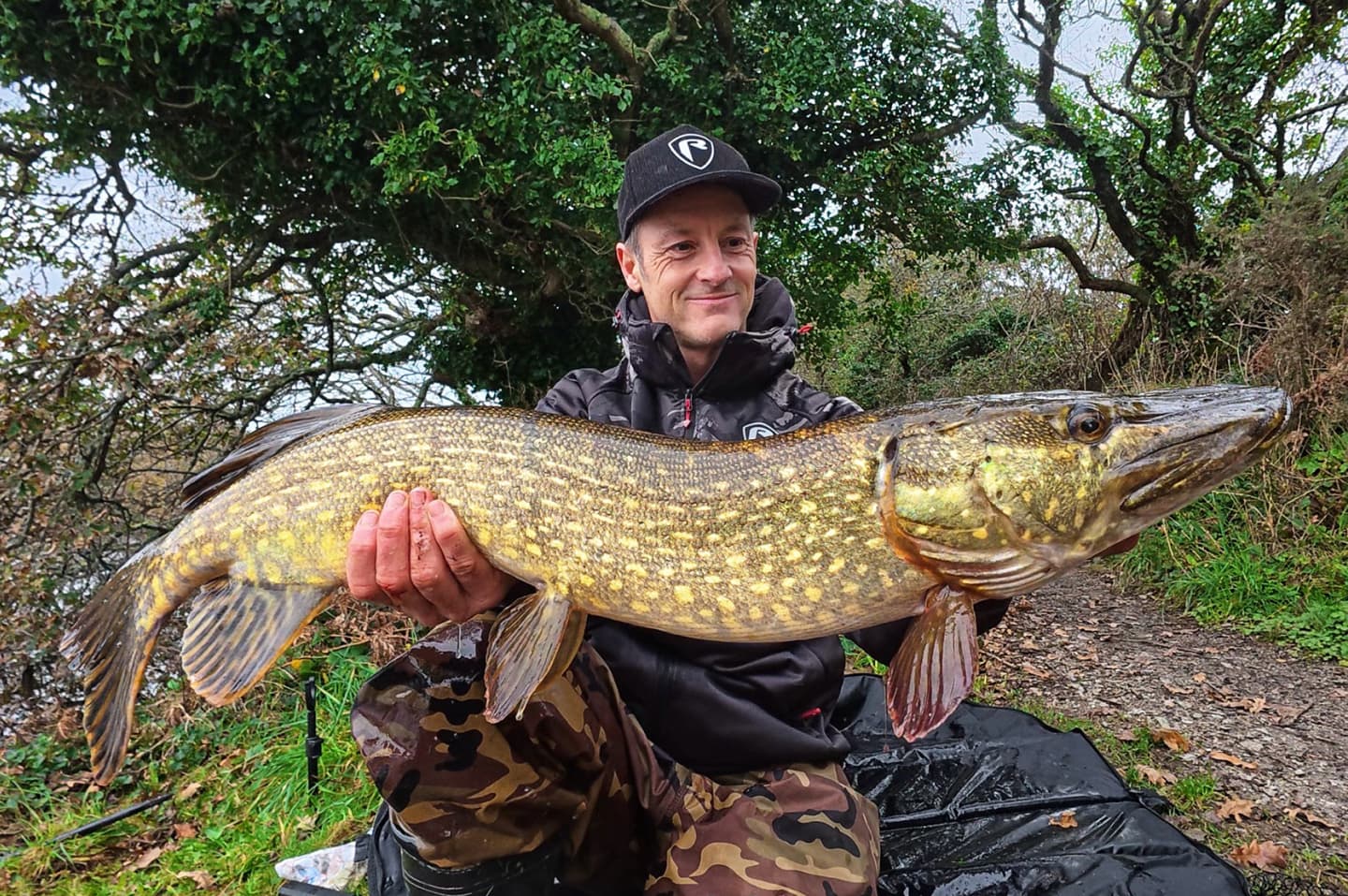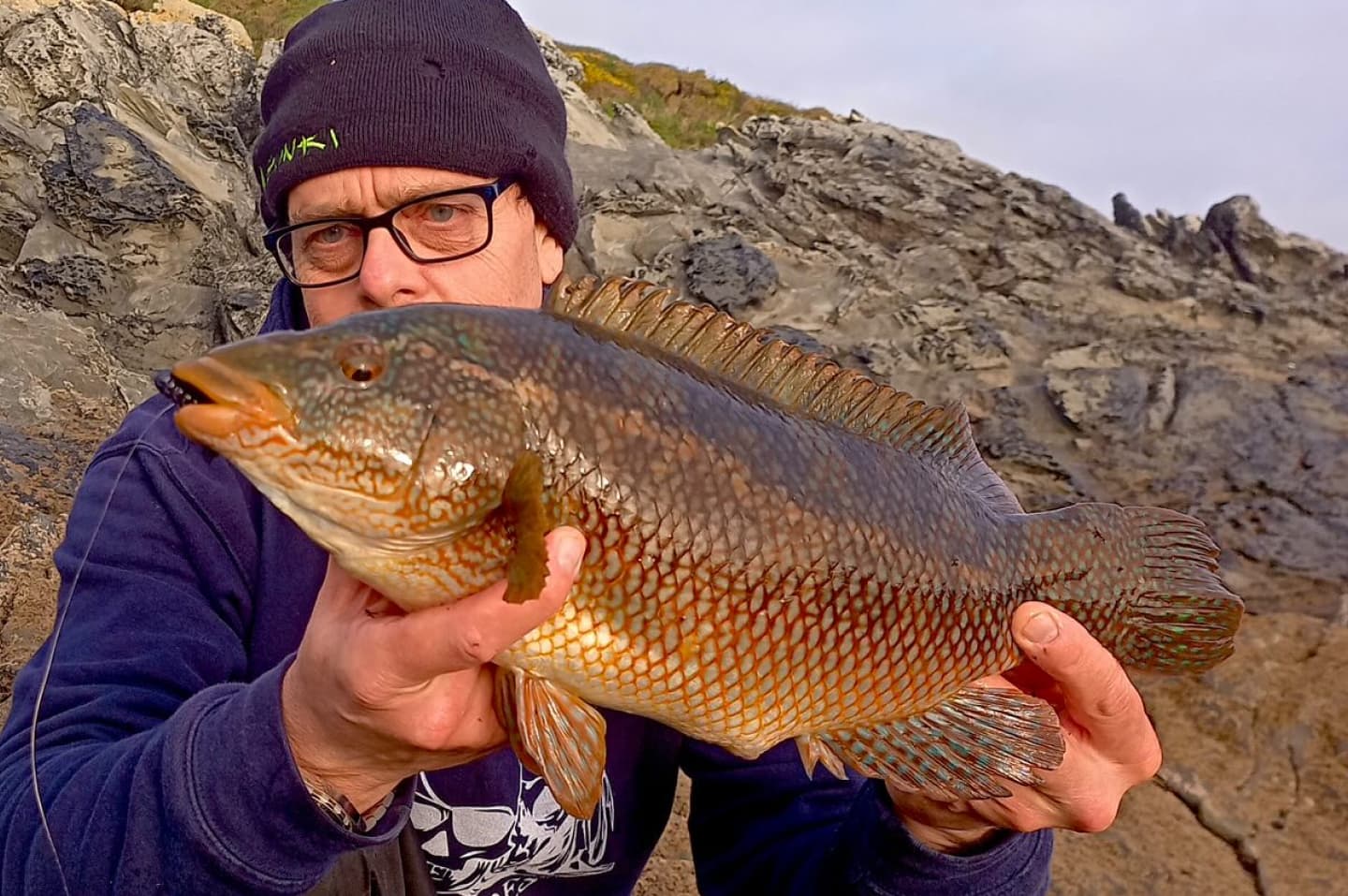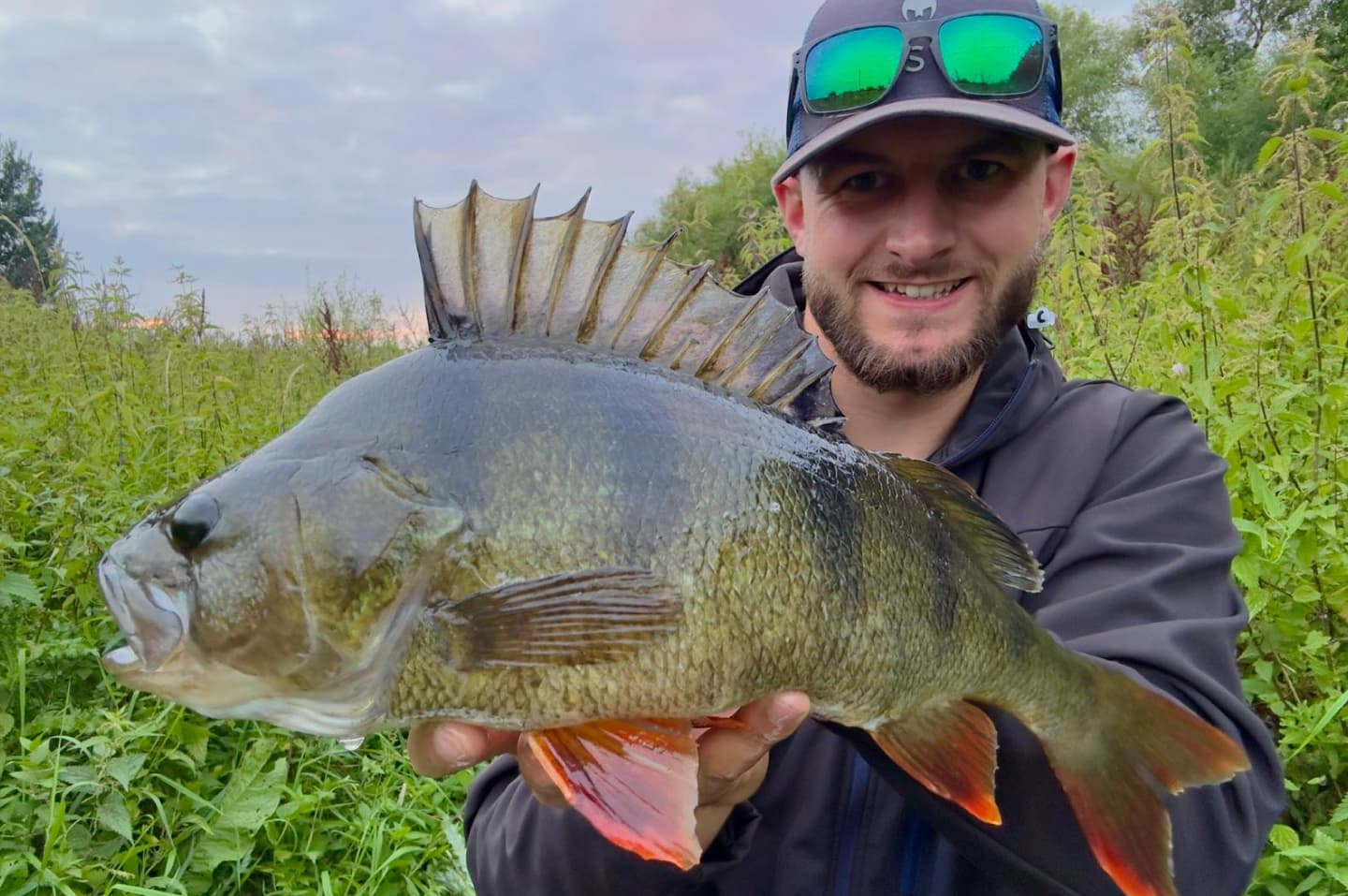
Lure Fishing for Perch Using the Free Rig
When it comes to lure fishing for perch, we’re always looking for that little edge, something that sets our presentation apart from what every other angler on the bank is doing. Earlier this season, I found that edge in the free rig. I’d heard plenty about it in bass circles, but it wasn’t something many UK anglers were using for perch. After a bit of experimenting and fine-tuning, everything started to click and the results were eye-opening. On pressured venues where others were struggling for bites, the free rig consistently produced fish, including several over 40 cm.
| GET THE TACKLE & LURES REQUIRED FOR THE FREE RIG |
|---|
| Z-Man Streakz Lure |
| Z-Man TRD Crawz |
| Gunki Hourra Craw |
| Shimano Kairiki 8-strand braid |
| VMC offset Cheboo hook – Size 2 |
| FiTU tungsten finesse sticks |
| 7.6 lb Favourite U1 fluorocarbon |

Why the Free Rig Works
The key to the free rig’s success for perch lies in how it separates the weight from the lure. Unlike a jighead or Ned rig, where the weight is fixed, the free rig allows the lure to move more naturally through the water. When the lead touches down, the lure follows slowly behind, either rising or fluttering depending on its buoyancy. This subtle difference gives the bait a much more organic movement, and that’s often all it takes to fool a wary perch that’s seen every other presentation under the sun.
It also creates a unique “fall and rise” effect. By simply controlling your slack line, you can make a floating lure lift gently through the water column, imitating a dying or stunned baitfish. That motion, coupled with a slow fall, can be deadly when fishing over debris, weed, or silt where traditional rigs might snag or lose their appeal.
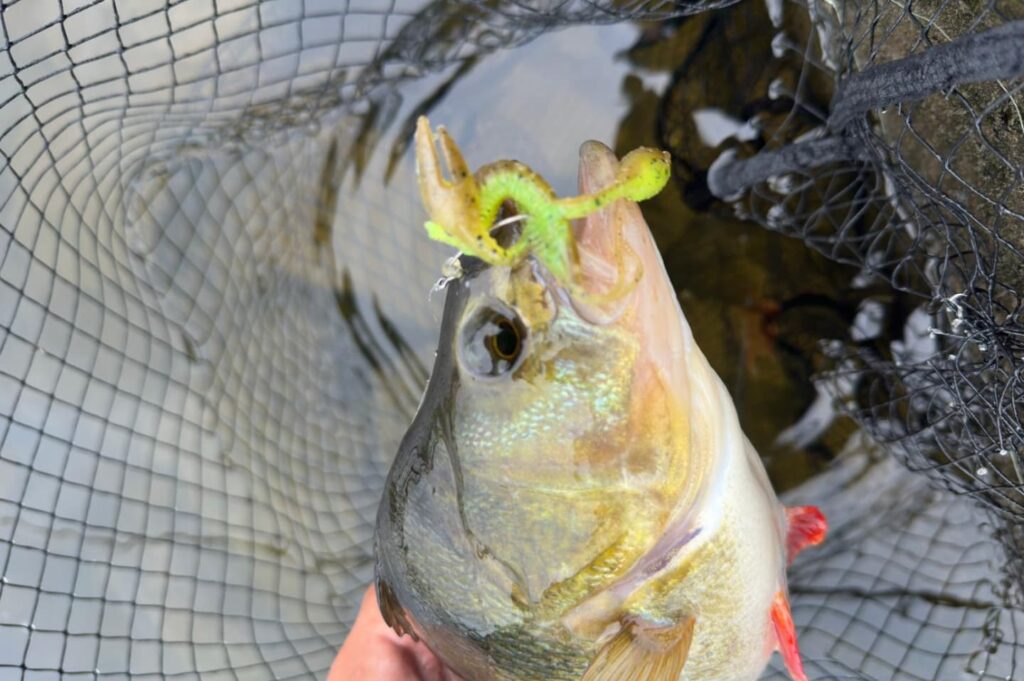
Finding My Rhythm with the Free Rig
My first real test of the free rig came on a small, shallow, weedy river. I rigged up a 3.75-inch Zman StreakZ in pearl, one of my go-to colours in clear water and cast just beyond a weed bed. By letting the lure fall and then slowly releasing slack, I watched it rise gracefully through the water. The forked tail flicked subtly in the flow, perfectly mimicking a struggling fish. That was all it took. Moments later, the line tightened and I was into my first proper free rig perch a stunning 42 cm fish that fought well above its weight.
Encouraged by that early success, I switched things up to a floating creature bait, the 2.5-inch Zman TRD CrawZ. Using the same slack-line technique, the CrawZ would rise slowly off the deck, its claws fluttering with each pulse of current. The result was another cracking perch, this time 43 cm, taken in near-identical conditions. I’ve since had several more fish using this approach, and it’s quickly become one of my confidence methods when the going gets tough.
Experimenting with Lure Buoyancy
Floating baits clearly worked well, but I was still curious. I wanted to see how semi-buoyant lures would behave on the free rig. One of my favourites for this was the Gunki Hourra Craw 75. Although the plastic itself doesn’t float, the air chambers in the claws cause them to lift and flutter on the pause. On a session on the River Trent, I worked the lure slowly down the rocky margins, imitating a crayfish rooting around. Each time I paused, the claws lifted into that classic defensive pose. That small detail turned out to be irresistible, and another 40 cm perch couldn’t help but nail it.
The more I used the free rig, the more I realised that almost any soft plastic can work with it. The key isn’t the specific lure but how you use it. A slow fall, followed by long pauses and controlled slack, is what consistently draws bites. Sometimes the take comes on the drop, but just as often, it happens as the lure rises gently from the bottom.
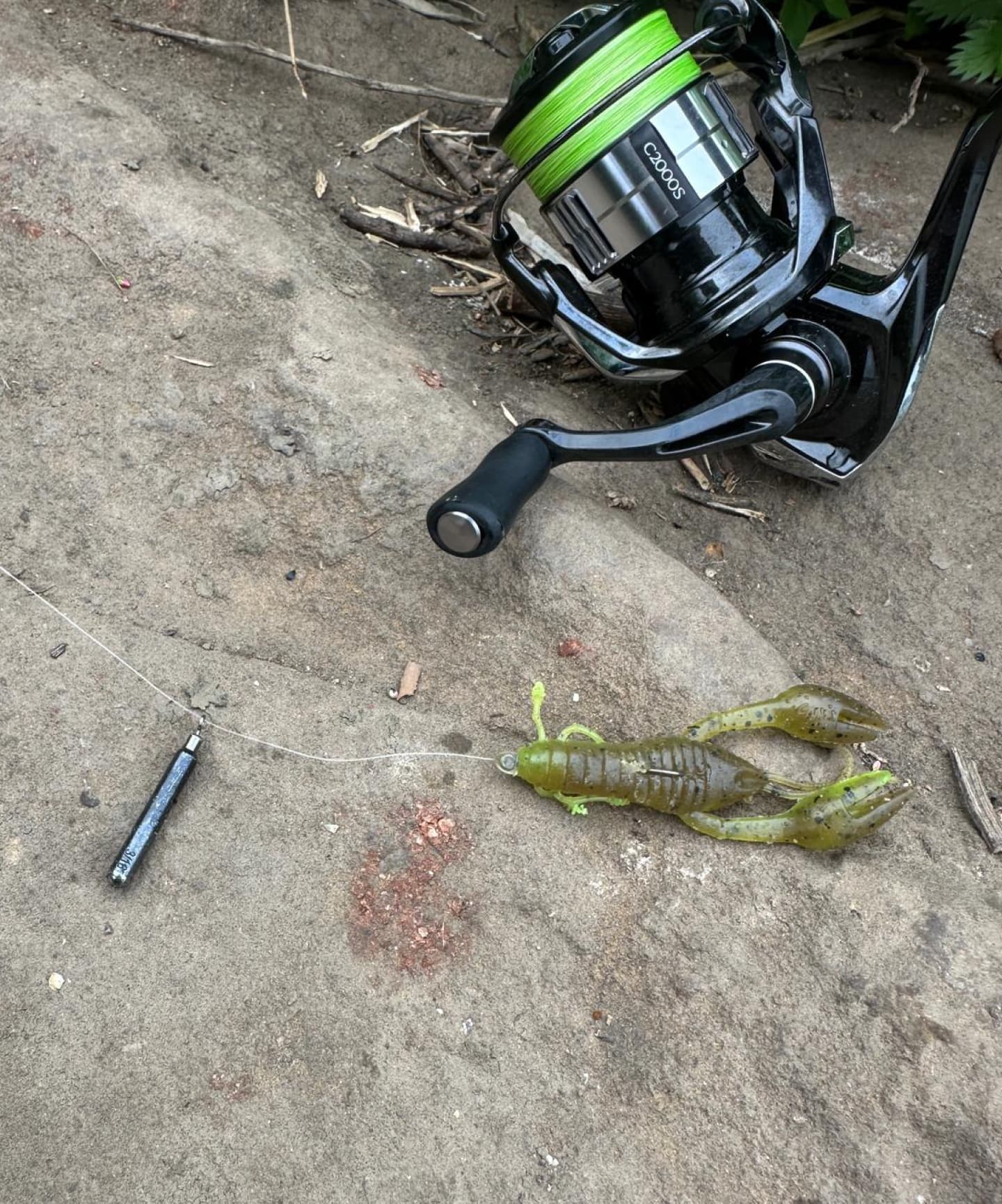
The Tackle Behind the Technique
When it comes to tackle, there’s no need to overcomplicate things. I use a light finesse setup with a 2–10 g fast-action rod for maximum sensitivity. A compact 2000-size reel balances the rod perfectly, and I spool up with 12 lb Shimano Kairiki 8-strand braid. For a leader, I like 7.6 lb Favourite U1 fluorocarbon, about two feet long, though I’ll sometimes extend it if the water’s ultra-clear or reduce it around heavy cover.
Weights are an important part of the free rig’s performance. I’ve settled on FiTU tungsten finesse sticks, usually around 5.3 g. Tungsten gives better sensitivity and a smaller profile than lead, which helps when fishing finesse-style presentations. The eyelet on the FiTU sticks also slides smoothly on the leader, ensuring the lure moves freely. Hook-wise, I rate the VMC offset Cheboo hook in size 2, which suits most creature baits in the 7–9 cm range.
Subtlety Over Speed
The biggest adjustment when moving from traditional jig-style presentations to the free rig is slowing down. The temptation to work the lure too fast is strong, but patience pays dividends. Let the rig settle, keep a semi-slack line, and use small rod lifts to make the lure hop or rise. The key is maintaining contact without dragging the lure unnaturally. Every inch of movement should look deliberate and fluid.
That slow, natural presentation is why I think the free rig excels on venues where perch are pressured or finicky. Because the fish feel almost no resistance when they inhale the lure, they hold on that bit longer, often just long enough for you to set the hook.
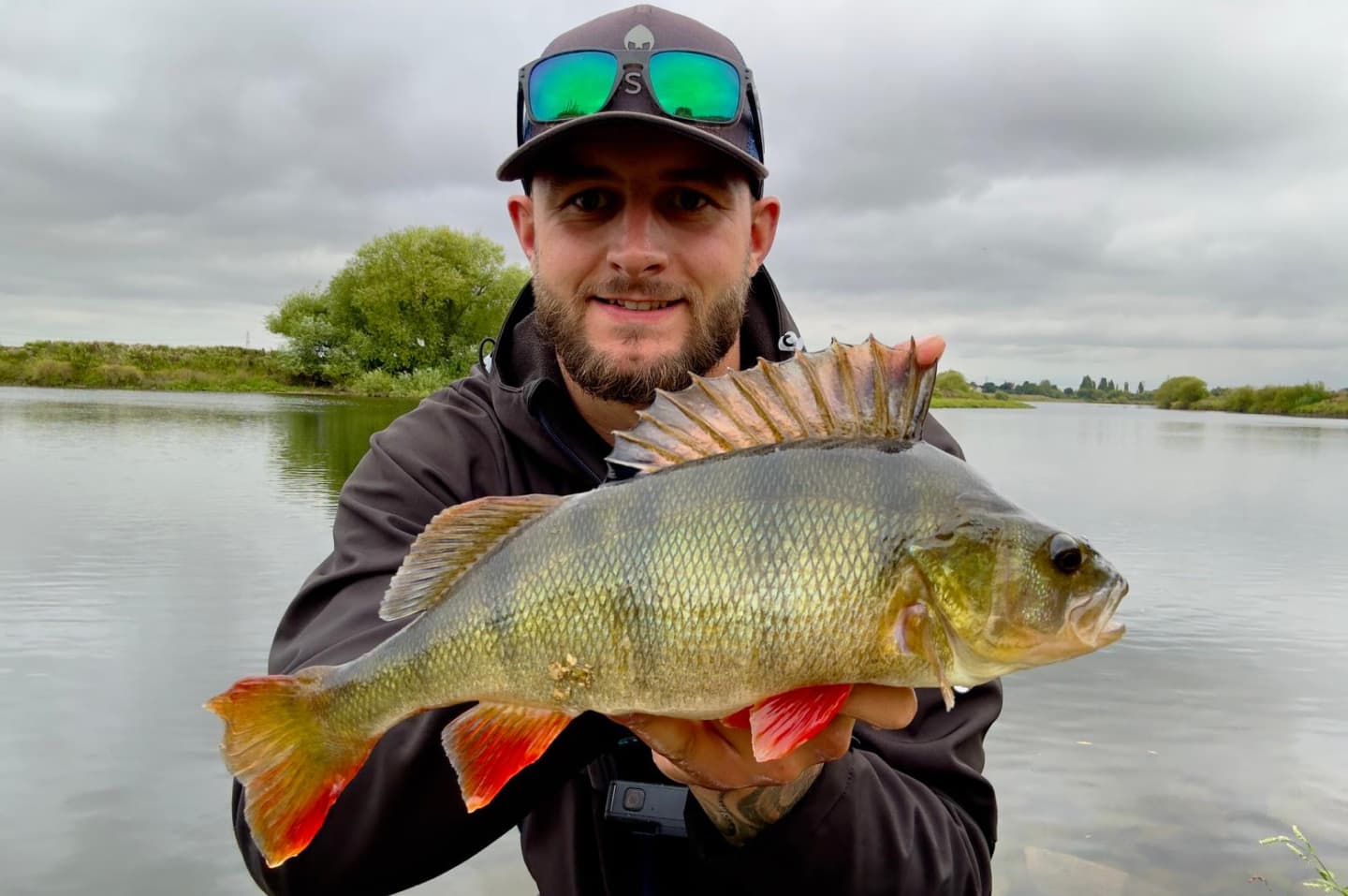
Final Thoughts on the Free Rig
After a full season experimenting with the free rig for perch, I’m convinced it’s one of the most versatile and underused techniques in UK lure fishing. Whether you’re fishing a canal, river, or stillwater, it offers a presentation that stands out from the usual jighead or Ned setup. It’s subtle, adaptable, and deadly effective once you get the hang of it.
If you’re looking for a way to tempt big perch when bites are hard to come by, tie on a free rig, experiment with buoyant baits, and play with slack and pauses. It might feel a bit different at first, but once you see that line twitch and feel the weight of a solid stripy on the other end, you’ll be glad you tried something new.

